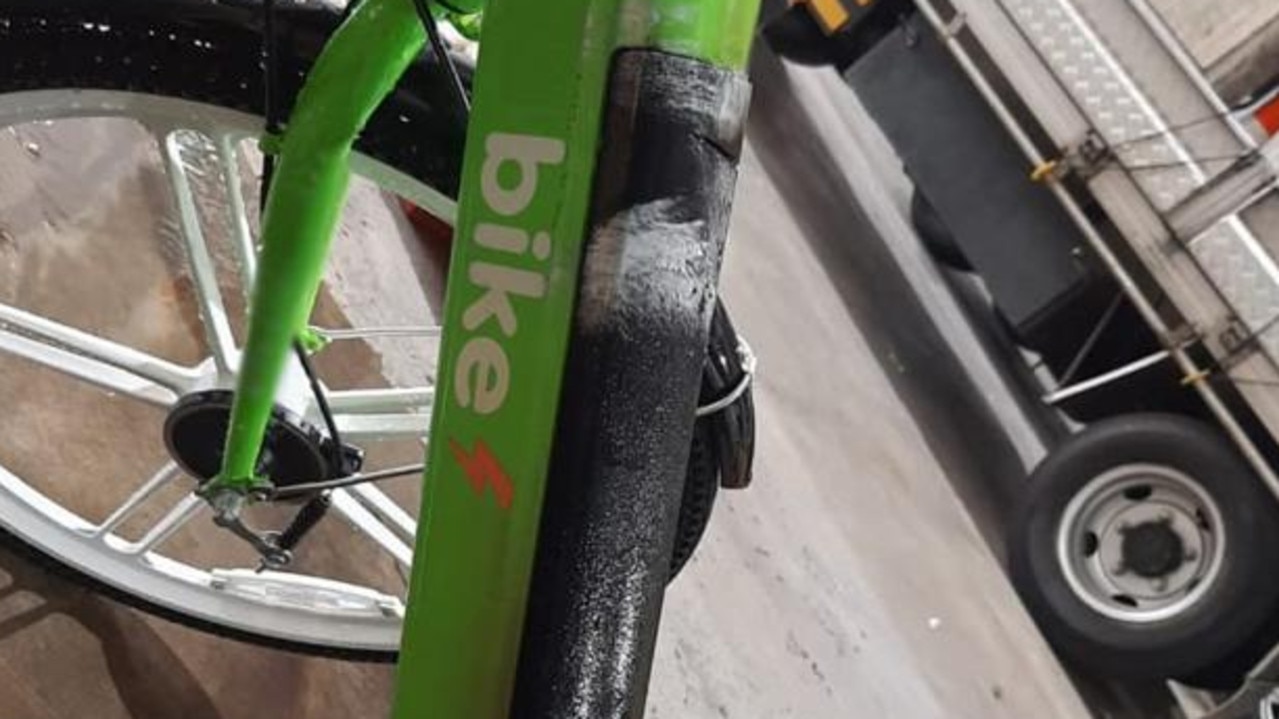Family forced to flee in another e-bike battery blaze
Authorities have reiterated their warnings about charging e-vehicle batteries indoors, showing the damage caused in yet another fire.
Another property has been damaged by an exploding rideable electric vehicle battery.
The latest in a spate of e-vehicle fires across Australia this time occurred in the northern Sydney suburb of Balgowlah, with the explosion from an e-bike battery throwing debris about three metres across the room in which it was charging.
The e-bike was on charge in a living room last Friday when the family home at time began hearing a popping noise as the battery experienced what’s known as thermal runaway.
Moments later the battery ignited and exploded.

Fire Rescue NSW (FRNSW) Fire Investigation and Research Unit Inspector Chris Hughes said those home at the time managed to escape and call firefighters, who arrived and submerged the battery in a bucket of water.
“We’re urging the public to charge and store lithium-ion batteries outside the home where possible so if they do overheat and explode, the chances of harm are reduced and there’s less risk of homes burning down,” Inspector Hughes said.
“Where it’s not practicable, charge lithium-ion batteries on a non-combustible surface and not in an entry/exit pathway, ensure your batteries and devices are in good condition and are compatible.
“Stick to reputable brands and ensure your home has a working smoke alarm and a fire escape plan, especially as we head into winter.”

The bike and charger in the Balgowlah incident were understood to be compatible.
In recent incidents, a Queensland mother and her two teenage sons were woken in the middle of the night to a fire sparked by a charging e-scooter battery at their Sippy Downs home on February 20.
While the garage of an Eastgardens home in eastern Sydney was likewise gutted by flames when the battery of an e-bike exploded on March 19.
A council worker had to extinguish a blaze caused by an e-bike battery experiencing thermal runaway on February 17 in Chatswood, also in Sydney.
And Western Australia’s Department of Fire and Emergency Services (DFES) reported at least 10 fires in the first three months of 2023, all sparked by lithium-ion batteries.

The fires start when the batteries go into thermal runaway, as one of the many cells that make up the battery bank overheats it bursts and leaks toxic and highly-flammable gas.
This starts a chain reaction as the initial overheated cell starts overheating its neighbouring cells, with the gases eventually bursting out of the battery housing, venting, and igniting.
The nation’s consumer watchdog is conducting its own investigation into lithium-ion battery fires, with part of the probe focusing on rideables.
The Australian Competition and Consumer Commission (ACCC) released an issues paper on the batteries for consultation last December, with a report on the matter is expected to be released by the end of the year.





